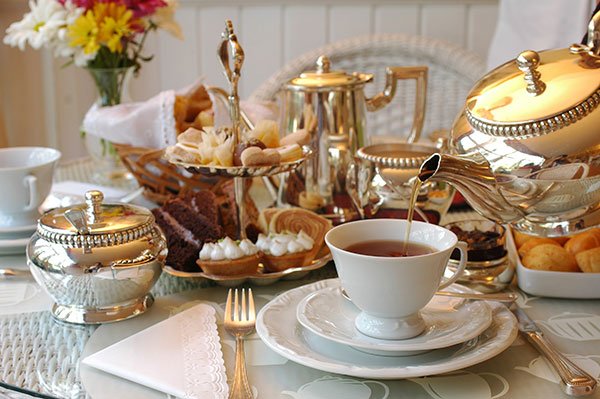English afternoon tea
It all started in the 1800's when Anna, the 7th Duchess of Bedford who, at the time was a close friend of Queen Victoria and a prominent figure within London society complained of "having that sinking feeling" during the late afternoon.
She wanted something small to satisfy her hunger, nothing too large just something to see her through till dinner time.

From this want, the afternoon tea ritual was born. However, we need to highlight that it was traditionally only a small bite of something, not the big celebration it is no
.jpg)
Know your Terminology
Those in the know refer to it simply as “tea,” not “afternoon tea” and never “high tea” (which is something completely different in the UK). It is correct to “have” tea, not to “take” tea, so you would say, for example, “I am having tea with The Queen this afternoon.” Similarly, you have “some tea,” not “a tea,” so would say, for example, “I would love some tea.” These little differences matter.What is Traditional Tea?
Traditional tea comprises a pot of leaf tea (never teabags), or sometimes two if different types of tea are being served (for example an Indian and a China), plus another pot of hot water; milk and sugar; cups, saucers, teaspoons and, usually, a tea strainer; sandwiches, cakes and scones; a large starched linen napkin. In a private house, traditional tea would be served in the sitting room (or drawing room in grand establishments) on a low coffee-style table. In hotels, it may be served at a higher dining-style table.How to Serve
Someone is nominated, or nominates themselves, as the pourer. It is correct to pour each cup of tea one by one — always say cup, never mug, in this context — and to pass each cup to the recipient before pouring the next. Never pour lots and then hand them out. The tea strainer should be used, if provided, by pouring the tea through it over the cup to catch any loose leaves. It is placed back in its rest or stand once pouring is finished.
.jpg)
Managing the Additions
Milk and sugar are passed round and everyone adds their own; it is essential to remember that milk is added after the tea has been poured, never before. Milk is added to black tea, such Assam, but Lapsang Souchong is usually enjoyed with a slice of lemon. Sugar is added last, after the milk, and the tea stirred by moving the teaspoon back and forth in an up-and-down motion — avoid large circular stirring motions which can, in some company, be seen as inelegant. The teaspoon is placed lengthways along the back of the saucer.
.jpg)
How to Drink It
Sit up straight and spread out the napkin on your lap. Hold the cup by the handle and bring it up to your mouth — avoid leaning forward to drink. Never cradle the cup in your hands and avoid raising your little finger. Take small sips and don’t slurp, and or blow on hot tea to cool it. The cup is put down on the saucer in between sips.Eating the Accompaniments
Little cucumber sandwiches are usually served, cut into small squares or rectangles and the crusts removed. It is traditional to take just one sandwich and, no matter how small, eat it in more than one mouthful, so take a couple of bites. Cakes are also served (cupcakes are modern phenomenon and not traditional tea fare) but should be small and mess-free.
.jpg)
Scones (pronounced “sconn” never “scoan”) are individual, circular cakes that are eaten with jam and cream, which is spooned onto the side of the plate. The scone is broken in half lengthways by hand (never use a knife) and the jam and cream spread onto it (using a knife). Never put the two halves back together to make a sandwich — each piece is eaten individually. Spread either the jam or the cream first onto the scone; there are various traditions in the UK but either is fine.
All of these accompaniments are put down on the plate in between bites, and eaten with the fingers, never a fork. The only cutlery required for tea is a knife for spreading any jam and cream (not for cutting).Finishing Touches
It is usual to enjoy two cups of tea; one is never enough and three too excessive.
When it is time to leave, it is polite to leave the napkin unfolded, placed to the left of the place setting — do not fold it up or leave it on your chair.